 Where there’s rubbish, disorganization, and debris, you will find a happy herd of piggies, ready to roll! The perfect indoor game to combat the winter blahs…it’s trash time!
Where there’s rubbish, disorganization, and debris, you will find a happy herd of piggies, ready to roll! The perfect indoor game to combat the winter blahs…it’s trash time!
We read Pigsty by Mark Teague (Scholastic, 1994). Wendell Fultz’s bedroom is a total pigsty. Ordered by his mother to clean it, Wendell is shocked to find an actual pig on his bed. As the mess in his room grows, so does the number of pigs, until finally Wendell is overwhelmed. He asks the pigs to pitch in and clean up. They do – and then depart for dirtier climes. One of my favorite books, and so fun to read aloud!
You’ll need:
- 1 large oatmeal container
- 1 paper cup
- Pink construction paper
- 3 paper towel tubes
- A selection of colored tape
- Scissors and tape for construction
- Markers for decorating
 First, the pig! Wrap a large oatmeal container in pink paper, then add a circle of pink paper to the lid as well. Next, cut a paper cup down to approximately 1.75″ and cover it with pink paper. This is your pig’s snout. Use extra paper for the ears, and a curl of paper (or corkscrewed craft stem) for a tail. Draw the eyes and nostrils on with markers. Finally, tape 3 paper towel rolls together to create the “steering stick” for your pig. You can color it with markers, or fancy it up with colored tape. You’re ready to race!
First, the pig! Wrap a large oatmeal container in pink paper, then add a circle of pink paper to the lid as well. Next, cut a paper cup down to approximately 1.75″ and cover it with pink paper. This is your pig’s snout. Use extra paper for the ears, and a curl of paper (or corkscrewed craft stem) for a tail. Draw the eyes and nostrils on with markers. Finally, tape 3 paper towel rolls together to create the “steering stick” for your pig. You can color it with markers, or fancy it up with colored tape. You’re ready to race!
We also highly recommend decorating a jersey number from this numbers 1-16 template. The paper number gets taped to your back, and the matching number gets drawn on your pig. The pig race gets chaotic, and you want to be able to find your pig quickly if it gets bumped, kicked, or otherwise separated from you.
 Time for the race! Scatter “rubbish” in a large area (we used plastic eggs, old film canisters, and toilet paper tubes because they rolled smoothly). Have all the contestants line up, standing behind their pigs with the steering stick. On the shout of “Go!” players push their pigs forward, zero in on a piece of rubbish, and push it across the finish line.
Time for the race! Scatter “rubbish” in a large area (we used plastic eggs, old film canisters, and toilet paper tubes because they rolled smoothly). Have all the contestants line up, standing behind their pigs with the steering stick. On the shout of “Go!” players push their pigs forward, zero in on a piece of rubbish, and push it across the finish line.
 A less competitive version is to turn a table into the “goal,” and have kids roll the rubbish underneath it. When all the garbage is under the table, everyone wins!
A less competitive version is to turn a table into the “goal,” and have kids roll the rubbish underneath it. When all the garbage is under the table, everyone wins!

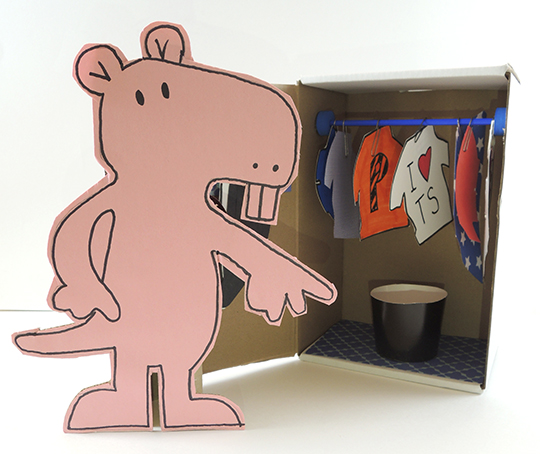
 At our story time, however, we went with a sturdier mole rat that could stand on its own. First, we traced our mole rat templates onto pink construction paper, then backed them with corrugated cardboard. We added a toilet paper tube support to the back, and then finished by attaching the clothing magnets. Here’s a look at the back and the front of our finished mole rats:
At our story time, however, we went with a sturdier mole rat that could stand on its own. First, we traced our mole rat templates onto pink construction paper, then backed them with corrugated cardboard. We added a toilet paper tube support to the back, and then finished by attaching the clothing magnets. Here’s a look at the back and the front of our finished mole rats: We also decided we needed to be extra fancy and make our mole rat a closet. As you can see, the closet rack is a snippet of
We also decided we needed to be extra fancy and make our mole rat a closet. As you can see, the closet rack is a snippet of  Kids loved customizing the various outfits and hats!
Kids loved customizing the various outfits and hats!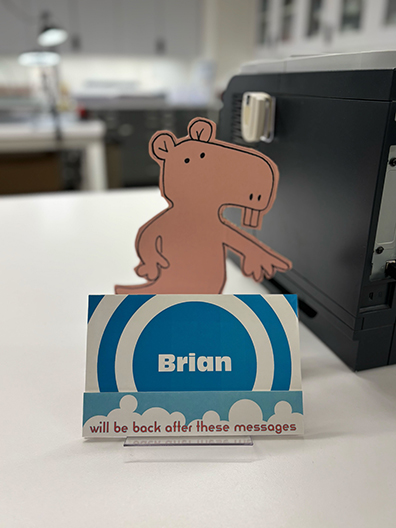
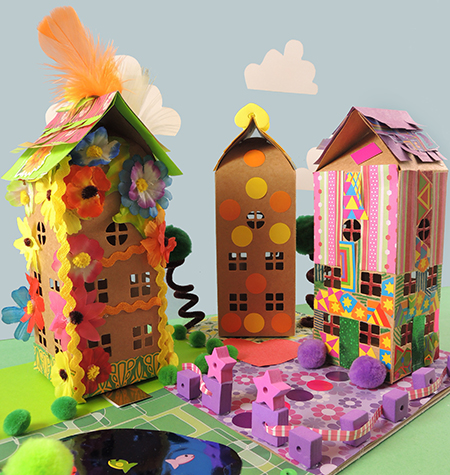
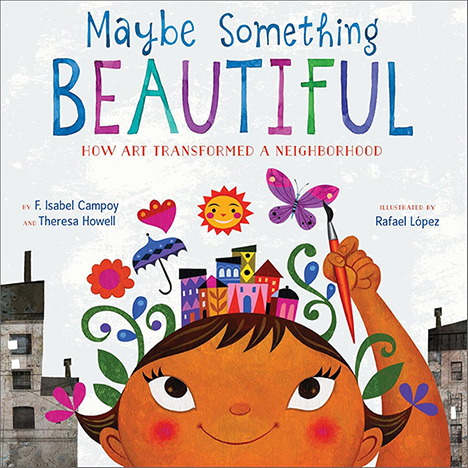 All you need for this project is a box and some markers and/or art supplies! We used leftover craft box houses from our
All you need for this project is a box and some markers and/or art supplies! We used leftover craft box houses from our 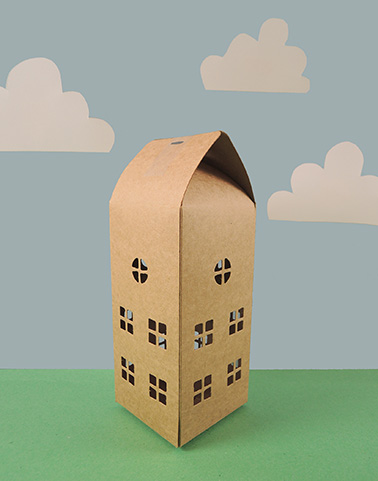 And then we brought out markers, paper, stickers, feathers, foam beads, pipe cleaners and our good ‘ol
And then we brought out markers, paper, stickers, feathers, foam beads, pipe cleaners and our good ‘ol